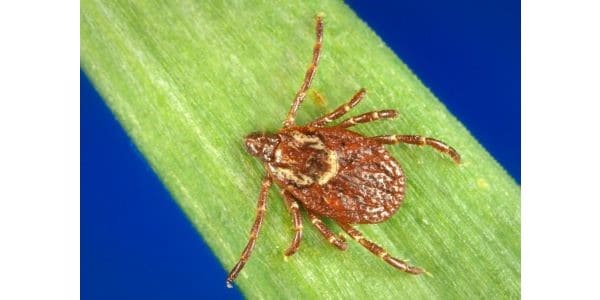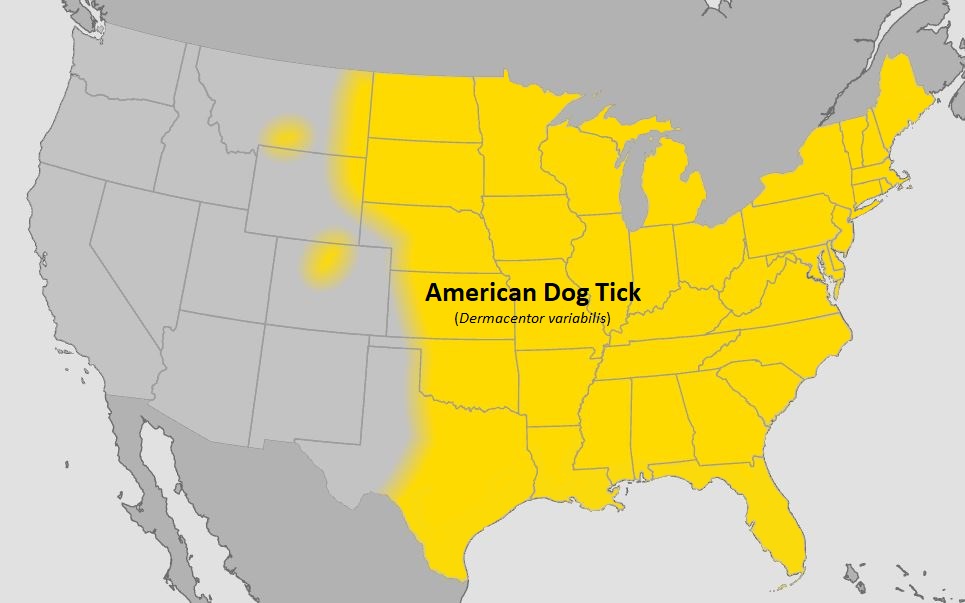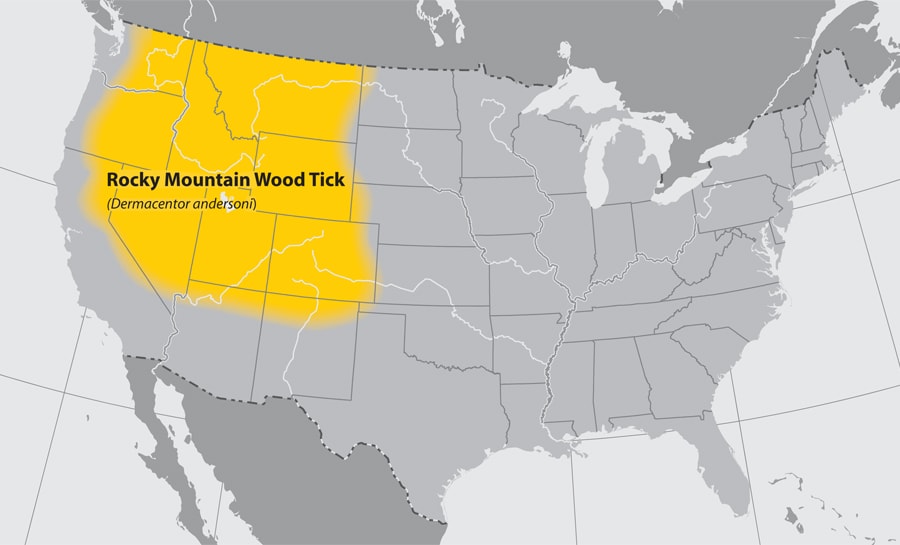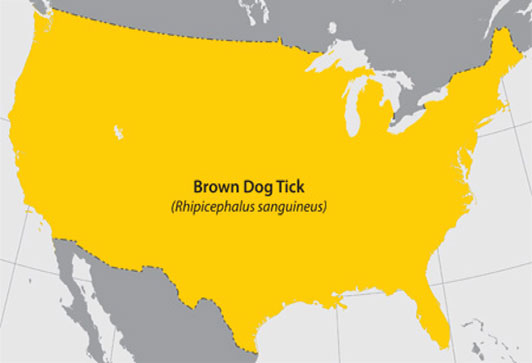At a glance
- Rocky Mountain spotted fever (RMSF) is a tickborne disease caused by the intracellular bacterium Rickettsia rickettsii. RMSF is transmitted through bites of infected ticks, mostly American dog ticks, Rocky Mountain wood ticks, and brown dog ticks.

How it spreads
Primarily, through tick bites:
- American dog ticks (Dermacentor variabilis) - Found extensively east of the Rocky Mountains.
- Rocky Mountain wood tick (Dermacentor andersoni) - Rocky Mountain region.
- Brown dog ticks (Rhipicephalus sanguineus) - Found worldwide and serves as the primary vector of RMSF in parts of the southwestern United States and Mexico.



Transmission of R. rickettsii through blood transfusion is extremely rare. Organ transplant acquired RMSF has not been documented but is physiologically possible.
Epidemiology
RMSF is one of several diseases reported under the category “Spotted fever rickettsiosis (SFR).” SFR are reported in each of the lower 48 states. More than 60% of cases are reported in North Carolina, Oklahoma, Arkansas, Tennessee, and Missouri. For more information, see geography.
Although cases are reported in every month of the year, most cases occur during May–August. For more information, see seasonality.
Transmission of R. rickettsii by the brown dog tick (Rhipicephalus sanguineus) in Arizona and Northern Mexico results in distinct differences in epidemiology. This tick species is found throughout the world and is often found on or near domestic dogs. This includes kennels, yards, and inside homes. RMSF cases in these areas occur year-round and tick exposure occurs in and around the home.
Unlike other areas of the United States, cases in areas Arizona and Northern Mexico are characterized by unusually high incidence and case fatality rates, particularly among children.
